11-Way P45 Motherboard Shootout
P45R2000-WiFi BIOS And Overclocking
| FSB Frequency | 100 to 800 MHz (1 MHz) |
| Clock Multiplier Adjustment | Yes |
| DRAM Ratios | 1.0, 1.2, 1.25, 1.5, 1.60, 1.67, 2.0 |
| PCIe Clock | 70 to 160MHz (1 MHz) |
| CPU Vcore | 0.81875 to 1.60 Volts (0.00625 Volts) |
| CPU FSB Voltage | Low, Middle, High, Highest |
| Northbridge (MCH) | Low, Middle, High, Highest |
| Southbridge (ICH) | Low, Middle, High, Highest |
| DDR2 Voltage | 1.79 - 2.72Volts (0.06 Volts) |
| DDR3 Voltage | 1.47 - 2.40Volts ( 0.06 Volts) |
| CAS Latency Range | tCAS : 3-7 ; tRCD : 3-10 ; tRP : 3-10 ; tRAS : 9-24 |
Loads of frequency range and DRAM ratios could allow for an exceptional overclock, although the most serious of extreme overclockers will frown on the maximum CPU Core setting of 1.60 volts. The settings are more than adequate for the majority of users, though we were disappointed with the labels “Low, Middle, High, Highest” being applied to the CPU FSB, northbridge, and southbridge voltage.
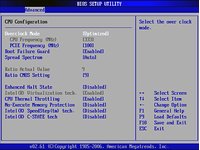
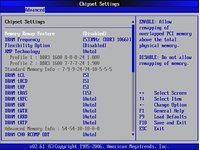
The BIOS menus are somewhat convoluted starting with a separate “CPU Configuration” menu that contains both FSB and PCIe frequency adjustments.
ASRock’s P45R2000-WiFi “Chipset Settings” menu is where the more complex overclocking begins. The system was able to detect both EPP and XMP technologies for DDR2 and DDR3 DIMMs, and anyone who prefers to adjust only a few timings will be pleased to find “automatic” values for the ones they prefer not to manually configure.
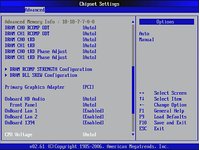
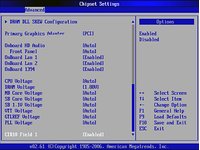
Scrolling down the Chipset menu one finds DRAM RCOMP Strength and DRAM DLL Skew sub-menus, along with onboard device settings.
The bottom of the Chipset menu contains all the voltage settings, even the CPU voltage that we might have expected to find in the “CPU” menu rather than the “Chipset” menu.
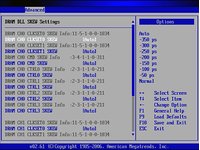
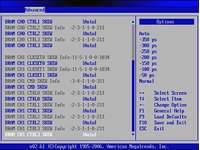
ASRock provides far more DRAM Skew adjustments than we’ve ever seen in the mainstream market, but that doesn’t necessarily make this a perfect motherboard for overclocking enthusiasts. Our overclock tests will provide a little better assessment of the P45R2000-WiFi’s capabilities.
Get Tom's Hardware's best news and in-depth reviews, straight to your inbox.
Current page: P45R2000-WiFi BIOS And Overclocking
Prev Page P45R2000-WiFi Onboard Devices Next Page P45R2000-WiFi Software And Accessories-
nickchalk Where are the lower price P45 M/B ?Reply
Asus P5Q pro is out for €110 and P5Q deluxe for €165 the price difference is about 70$ in Greece. -
Proximon I suppose I can get some good from having read this. Did you get paid by the word? Maybe next time you could just put together a complete features chart so that we can have some convenient comparison? You know, so someone could go to a chart and see at a glance which boards had eSATA or firewire, or 8 USB.Reply
-
JPForums I'd rather have the overabundance of information than a lack of information. Presentation could use a little refining (I.E. comparison charts and the likes), but having the relevant information available at least is a good thing.Reply -
the introduction and specifics are nice, the comparision isn't. so, why don't you test with an 8500 or qx9650? 6850 are outdated... and a mobo handling a c2d doesn't mean it can handle a quad too, see P5K for example (it stinks when it comes to a q6600).Reply
-
Crashman procithe introduction and specifics are nice, the comparision isn't. so, why don't you test with an 8500 or qx9650? 6850 are outdated... and a mobo handling a c2d doesn't mean it can handle a quad too, see P5K for example (it stinks when it comes to a q6600).Reply
Tom's Hardware wants the performance of current articles to reflect that of recent articles, so a "standard test platform" was chosen a while ago. It will get updated, but probably not before the new socket becomes widely available. -
zenmaster I would have liked to see something such as a P35 and an X48 as controls to help analyze the P45 Performance.Reply
In otherwords, What is the P45 Gaining me over the older P35.
What would I gain by going to the X48. (Or Lose) -
Crashman zenmasterI would have liked to see something such as a P35 and an X48 as controls to help analyze the P45 Performance.In otherwords, What is the P45 Gaining me over the older P35.What would I gain by going to the X48. (Or Lose)http://www.tomshardware.com/reviews/intel-p45-chipset,1961.htmlReply -
johnbilicki The first 17 pages were filled with nothing but junk from ASUS. Do us a favor: don't even bother featuring or *MENTIONING* anything for any reason from a company that refuses to RMA 200-400 dollar brand new motherboards with anything other then used and usually broken junk. It destroyed my enthusiasm for the article.Reply -
dobby nickchalkWhere are the lower price P45 M/B ?Asus P5Q pro is out for €110 and P5Q deluxe for €165 the price difference is about 70$ in Greece.Reply
the p5q PRo is a p43 board, i should know i have one
